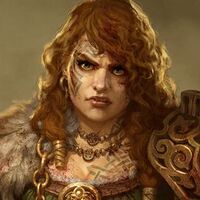Cartulia: Difference between revisions
| Line 154: | Line 154: | ||
====Reign of Alavarro II==== | ====Reign of Alavarro II==== | ||
[[Image:PuertoAlcazarra.jpg|thumb|250px|<small><center>[[Puerto Alcázarra]] today owes its existence to Alvarro II.</center></small>]]Alavarro II shared similar motivations to his mother and was fascinated by military matters; however unlike his mother who had inherited a nation with room for reform and a need to develop, Alavarro had inherited a disciplined and effective army in the form of the Royal Marines established by his mother. Instead Alavarro set his eyes upon the navy; though the Royal Marines were trained and intended to serve at sea as well as on land, the organisation behind the ships that actually carried them was far less effective or well conceived. Corto I had only needed to use his ships as a means of transporting troops along the coastline, most of the fighting during the unification had taken place inland and as a result he had seen no need to further organise a naval force during the unification. Prior to the reforms of Alavarro II the navy was practically non-existent with civilian and merchant vessels being conscripted during times of conflict; a system which though cheap, was not particularly effective and left Cartulia vulnerable to piracy and coastal raiders. Alavarro commissioned the construction of the nation's first dedicated military shipyard in Puerto Alcázarra in 122 ICC and construction was completed in 129 ICC; the shipyard was massive, carved into the rock of the sea cliffs north of the city proper and could be used to construct four ships at a time. Under Alavarro's direction the Royal Service established departments responsible for the management of the marines and the navy; these would include institutions with the goal of equipping, supplying, and maintaining soldiers and ships. | [[Image:PuertoAlcazarra.jpg|left|thumb|250px|<small><center>[[Puerto Alcázarra]] today owes its existence to Alvarro II.</center></small>]]Alavarro II shared similar motivations to his mother and was fascinated by military matters; however unlike his mother who had inherited a nation with room for reform and a need to develop, Alavarro had inherited a disciplined and effective army in the form of the Royal Marines established by his mother. Instead Alavarro set his eyes upon the navy; though the Royal Marines were trained and intended to serve at sea as well as on land, the organisation behind the ships that actually carried them was far less effective or well conceived. Corto I had only needed to use his ships as a means of transporting troops along the coastline, most of the fighting during the unification had taken place inland and as a result he had seen no need to further organise a naval force during the unification. Prior to the reforms of Alavarro II the navy was practically non-existent with civilian and merchant vessels being conscripted during times of conflict; a system which though cheap, was not particularly effective and left Cartulia vulnerable to piracy and coastal raiders. Alavarro commissioned the construction of the nation's first dedicated military shipyard in Puerto Alcázarra in 122 ICC and construction was completed in 129 ICC; the shipyard was massive, carved into the rock of the sea cliffs north of the city proper and could be used to construct four ships at a time. Under Alavarro's direction the Royal Service established departments responsible for the management of the marines and the navy; these would include institutions with the goal of equipping, supplying, and maintaining soldiers and ships. | ||
The reign of Alavarro II also saw the rapid growth of trade as well as the beginning of international trade overseas for Cartulia itself. The Greater Clans could afford to invest in trading expeditions that brought back new materials and ideas; Alavarro himself however was only passably interested in economic concerns and was content to allow the situation to manage itself. As long as the Greater Clans continued to pay taxes he did not seem to mind where they got their coin from. The governmental indifference to the growth of trade left it in many places totally unregulated; on the one hand this had the benefit of causing banking to take hold as well as modern mercantile practices, but on the other without regulation wealth disparity was extreme and a system of indentured servitude evolved. While income inequality was nothing new at this time poverty became rampant and the nation faced a series of food shortages due to wider mismanagement. At the time of Alavarro II's death in 158 ICC the nation was facing growing food shortages and a rising infant mortality rate. | The reign of Alavarro II also saw the rapid growth of trade as well as the beginning of international trade overseas for Cartulia itself. The Greater Clans could afford to invest in trading expeditions that brought back new materials and ideas; Alavarro himself however was only passably interested in economic concerns and was content to allow the situation to manage itself. As long as the Greater Clans continued to pay taxes he did not seem to mind where they got their coin from. The governmental indifference to the growth of trade left it in many places totally unregulated; on the one hand this had the benefit of causing banking to take hold as well as modern mercantile practices, but on the other without regulation wealth disparity was extreme and a system of indentured servitude evolved. While income inequality was nothing new at this time poverty became rampant and the nation faced a series of food shortages due to wider mismanagement. At the time of Alavarro II's death in 158 ICC the nation was facing growing food shortages and a rising infant mortality rate. | ||
Revision as of 23:42, 18 July 2019
Holy Empire of Cartulia Despotismo de Cartulia استبداد كارتوليا | |
|---|---|
| Motto: "Anorfod." "Immortality." | |
| Anthem: "Iblesi'Waltzenknecht" "Dance of the Iblesians"[1] | |
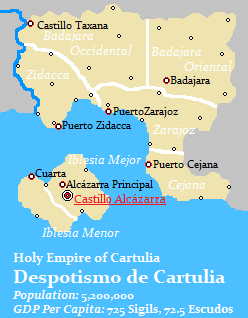 Map of Cartulia. | |
| Capital | Castillo Alcázarra |
| Largest city | Alcázarra Principal |
| Official languages | Iblesian |
| Recognised national languages | Xedan |
| Ethnic groups | 97% Iblesi Dawi, 3% Other |
| Demonym(s) | Cartulian |
| Government | Absolute Monarchy |
• Déspota Tyrant | Rocinante II |
• Gran Príncipe Grand Prince | Juan-Carlos Rocinantez d'Ladron |
• Ruling House | House d'Ladron |
| Independent (Sovereign) | |
• Juramentos de los Thurha | 1st Primeron 1 ICC |
• Juramentos de Alavarro | 15th Terceron 1 ICC |
• Sumisión de los Príncipes | 12th Cuarton 4 ICC |
• Libro de Leyes | Ongoing |
| Population | |
• Estimate | 5.2 million |
| GDP (PPP) | estimate |
• Total | 3,770,000,000 Sigils |
• Per capita | 725 Sigils |
| GDP (nominal) | estimate |
• Total | 377,000,000 Escudos (72.5 Escudos) |
| Currency | Escudo (E) |
| Date format | dd.mm.yyyy |
The Holy Empire of Cartulia (Iblesian: Despotismo de Cartulia (استبداد كارتوليا), more commonly shortened to Cartulia, is a Dawi nation located in southern continental Bezek. Cartulia shares a land border with the Human nation of Ras Vertaz to the west, and the Human nation of Olivel to the east. Mainland Cartulia is located on the island of Iblesia a short distance off the southern coast of Bezek, however the majority of the nation's land area is located on mainland Bezek to the north. The border with Ras Vertaz is defined by the line of the Palencaea River while the far border with Olivel is delineated by the Sadrano Ridge. The Holy Empire is an absolute monarchy with its capital city, Castillo Alcázarra, located on the island of Iblesia; Castillo Alcázarra is mostly a subterranean city occupying the majority of the island. The majority of Cartulia's urban centres can be found underground, with the exception of harbours and ports which tend to be built into sea cliffs and havens to take advantage of the natural terrain. Cartulia has a population of about 5.2 million people, the majority of whom are Dawi.
Cartulia has been inhabited by Dawi for an unknown period of time; it is known that they were already present at the beginning of the First Era XSC because written language was adopted by the Dawi quite early on and much of this original writing was carved in stone. Cartulian historians from the Academia Real de Historiadores in Alcázarra Principal succeeded in deciphering the earliest known Dawi script found in modern day Cartulia, known as the Iblesian Progenitor Script two hundred years ago in 622 ICC which enabled them to read historic accounts of the Dawi inhabitants. Known Cartulian history has it that the Dawi were divided into Thurhata, petty kingdoms ruled over by a series of powerful clan. Though the petty kingdoms were separate political entities the Dawi of the area are believed to have been part of a larger cultural group which formed the basis for the modern Iblesian culture and race. Around 900 years ago the Thurh (lit. King) of Iblesia, Corto I, began the process of actively uniting the Iblesian Dawi and 822 years ago in 1 ICC (or 202 3e XOC, 620 XSC) the process was completed with the Juramentos de los Thurha. Cartulia has been ruled as a single nation since that time under a system of absolute monarchy.
The Cartulian monarchy operates according to the dictates of the Juramentos de Alavarro in 1 ICC; the original document remains, cast in bronze, and set down the powers and rights of the monarch, as well as the laws of succession. The Juramentos de Alavarro are named after Corto I's heir [[Alavarro I]|Alavarro Cortez d'Ladron] who agreed to uphold the agreements made during the Juramentos de los Thurha, thus ensuring his succession and the continuance of Cartulia as a united nation. The basis of the Cartulian legal system is drawn from the pre-unification laws of the Thurhata of Iblesia and was codified in 7 ICC with the creation of the Libro de Leyes (lit.: Book of Laws), this occurred during the reign of Alavarro I better known as Alavarro Legislador in Iblesian, or Alalvarro Lawmaker in Xedan. Each clan and city holds its own Book of Laws into which all legal decisions are written, every five years all of these books are brought to the capital and collated; new laws are thus made based upon the decisions made in the preceding five years. The core Book of Laws remains and only the monarch or a majority of the Judiciar can overturn existing laws. Cartulia's government is run and facilitated by a vast bureaucratic machine known as the Servicio Real (lit.: Royal Service), a kind of civil service which has functionaries present in every settlement overseeing everything from law enforcement to taxation.
Cartulia is a reasonably wealthy nation. Its economy focuses on the Dawi tradition of stone and metal working as well as the extraction of minerals from the earth, however unlike many Dawi nations it also has a strong agricultural base above ground to support its subterranean enterprises. Cartulia operates an open economy in which serfdom has been abolished in favour of free individual enterprise; this has led to the creation of a guild and company system. Taxes are paid to the local Thurh who in turn pays taxes to the reigning Déspota. The free enterprise and capitalist nature of the Cartulian economy, which focuses upon a meritocratic system of gaining wealth, has resulted in the development of a fluid class system and what can be described as a large Middle Class by comparison to many other nations. The national budget is managed by the Banca Real (lit.: Royal Bank) which is an organisation within the Royal Service. Meanwhile the nation's currency is issues, regulated, and maintained by the Menta Real (lit.: Royal Mint), another arm of the Royal Service, which is held in high esteem.
The army and navy of Cartulia are highly organised and run directly by the state; clans provide a tithe of youths to enter the military and Cartulian soldiers and seamen are trained in their craft from the age of six. The core of the Cartulian armed forces are the Marinos Real (lit.: Royal Marines) which serves as both naval ground forces and the army itself. The military is a meritocratic organisation which swears direct allegiance to the Déspota and is led by officers trained and appointed by a panel of retired officers and generals under the direction of the Royal Service.
Etymology & Terminology
The name Cartulia is derived from the mythological Iblesian hero Cartu Valdez d'Lus who overthrew the pre-Iblesian Idaasi civilisation which had enslaved the Dawi of the area. In modern Iblesian Cartulia has no direct translation however in Early Iblesian it literally meant "Liberated by Cartu". Even though the post-Idaasi Dawi did not unify under Cartu's reign they used his name to refer collectively to the lands they now inhabited and ruled. Due to the continued veneration of Cartu d'Lus at the time of Corto I's unification of the territories neither Corto nor his nation's name superseded that of Cartu.
Known in Xedan as 'The Holy Empire of Cartulia' this is in fact only a close approximation to the actual meaning of the nation's Iblesian title of Déspota. There is no direct translation of the term Déspotismo into Xedan, though the title of Déspota roughly means Despot in most interpretations; however by nature the Déspota is also a figure of religious significance and veneration and is as much a spiritual leader as a political or secular one. Some scholars argue that a more appropriate title for the Déspota would be Emperor since they rule over multiple kingdoms and kings, however the Déspota is a more direct and centralised absolute monarch than an Emperor would typically be and the Cartulian kings are more akin to senior nobility in terms of their status and power.
The full Iblesian name for Cartulia is Déspotismo de Cartulia, however it is more commonly referred to abroad by the name The Despotism of Cartulia and only occasionally as the Holy Empire.
History
The lands of Cartulia have been continuously inhabited throughout recorded history, with early Dawi records indicating that for at least three centuries prior to the creation of writing an organised civilisation known as the Idaasi ruled over the territory. It is unknown what species the Idaasi were as they were wiped out by the Dawi at some time prior to the invention of writing and written records, however the Idaasi were powerful enough according to Iblesian mythology to enslave the Dawi of the region until the rise of Cartu Valdez d'Lus and his rebellion. The few remaining Idaasi ruins are enigmatic locations that hint at an incredibly advanced society, a prime example is the lone mountain at the centre of Iblesia which forms the core of the city of Alcázarra Principal which was raised through the use of powerful magic by the Idaasi for some unknown reason. Centuries of Dawi habitation of the mountain have obliterated the majority of the Idaasi structures in and around the capital city, however on the Bezek mainland near the coastal city of Puerto Alcázarra the ruins of an Idaasi city known as Nekhepolitur remain more or less untouched and are a site of superstitious dread and taboo. Cartu d'Lus' rebellion against the Idaasi and the subsequent obliteration of the Idaasi civilisation in its entirety are the subject of numerous ancient myths and legends, and though clear written records carved in stone or cast in metal do remain dating back over one thousand four hundred years, Cartulia scholars remain divided as to whether Cartu d'Lus and his accomplishments are a matter of fact of historic fiction.
Thurhata (c. 320 BIC - 74 BIC)
According to the commonly accepted history of the Iblesian Dawi of Cartulia the Greater Clans (each lead by a Thurh) separated and each founded their own independent petty kingdoms; collectively these kingdoms were referred to as the Thurhata and shared the common Iblesian Dawi culture. Though each of the Thurhata were sovereign and ruled by their own King the bonds of Cartu d'Lus' legendary rebellion and the shared Iblesian Dawi culture meant that the Thurhata were akin to a confederation which could easily unite in response to external crisis. An attempted seaborne invasion in 127 BIC by Adaasi raiders was met with the united front of all of the Thurhata even though only the coastal regions of Cartulia were affected by the raids and invasions, and from 123 BIC the patrolling of Cartulian waters for pirates and raiders became a joint responsibility. By 80 BIC, shortly before Corto I began unifying Cartulia, all of the smaller Thurhata had been absorbed into one or other of the larger Thurhata, leaving only five. The Thurhate of Iblesia established its position as the pre-eminent power among the Thurhata in 74 BIC when the thrones of Cejana and Zidacca were inherited by members of House d'Ladron, the ruling House of Iblesia, thus making them tributaries of Corto I.
Unification (74 BIC - 1 BIC)
Corto I used his position as the overlord of three out of the five Thurhata to leverage hegemony over the remaining two and in all but name the entirety of modern day Cartulia was under his dominion by 62 BIC. Initially the territories of Cartulia were not unified as a single state but rather as a series of states which owed tribute and fealty to the king of Iblesia, records on the subject are unclear as to whether or not Corto I intended for this to be the case on a permanent basis, however in 24 BIC a rebellion in Zidacca and Badajara which intended to restore the power and end the system of fealty to Iblesia spurred military action. For the following twenty four years, until the defeat of Zidacca and Badajara's forces in 1 BIC, Corto I waged a ruthless military campaign characterised by rapid manoeuvre and the practice of decimation of captured enemy soldiers. At the turn of the year following the surrender of the rebellion's leaders Corto I proclaimed the Despotisma and had himself crowned Déspota, forcing the leaders of the Greater Clans to accept the Oaths of the Bruinkanz.
During this time the military forces of the Iblesian Dawi were largely part-time, with only a limited warrior class in the form of personal bodyguards. Corto set himself apart by establishing a large professional fighting force was standardised training focused upon the idea of disciplined formation fighting. The bulk of Corto's army were spearmen wearing bronze and leather armour; what made these spearmen particularly effective however was that they carried a plata almost as tall as they were and were given a bronze or iron kukri as a secondary armament. Intended to fight in close formation and trained to form both square and rounded formations depending upon the conditions, these spearmen were versatile and man for man far more effective than the less disciplined troops they faced. Corto was not content to rely upon heavy spear infantry alone however, and employed a number of more specialised troops including skirmishers and archers as well as a small cadre of elite cavalry mounted on great mastiffs. Most notable among Corto's forces though were his royal guard, led by Kira Miri Drohz, who were each gifted uniquely engraved plate armour and a two handed axe; according to contemporary accounts no rebel formation or force could withstand a heavy infantry charge from Corto's royal guard.
Post-Unification (1 ICC - 22 ICC)
Following the unification of Cartulia by Corto I the process of consolidated and solidifying the unity of the nation was begun. Corto I began with the creation of the Royal Service in 2 ICC and left its formalisation and management to his trusted advisor Jura Ibrahiminez d'Guis while he proceeded to make a tour around the newly unified nation of Cartulia with the army he had used to crush the rebellions in Zidacca and Badajara; the progress was slow because the army was required to lay a basic road everywhere it went to connect the overland settlements of the Bezek mainland to one another; they also established fortifications near each major hold's surface entrance which were manned by troops taken from the forces he brought with him. Additionally everywhere Corto I went he left a cadre of bureaucrats to ensure that his will was carried out. Contemporary historians view the reign of Corto I as one of violence and oppression and though he unified the country it is the prevailing view that he was a bloodthirsty tyrant who brutally crushed any hint of dissent or rebellion no matter how trivial; at the time however, perhaps as a form of early propaganda, the intelligentsia and academic classes portrayed Corto I as a strategic genius.
Oaths of Succession (1 ICC)
One of the terms by which the Thurha had agreed to the Oaths which had ended the rebellion and unified Cartulia was that Corto I establish a clear line of succession and guaranteed the continuity of his line's rule. Corto had many children by multiple wives and tradition held that the eldest child of each of a man's wives inherited an equal portion of their father's estate upon his death; this however was an unacceptable arrangement for the Thurha and for the Judiciar who sought to prevent further bloodshed and war between the Iblesian Dawi. Thus, three months after proclaiming the Despotismo Corto instructed Jura Ibrahiminez d'Guis, the head of the Royal Service, to form a set of oaths to be sworn by Alavarro, the most promising of his sons and a further set of oaths to be sworn by his remaining children, to ensure a smooth succession. On 15th Turceron 1 ICC Alavarro made the Juramentos de Alavarro, securing his place as the sole heir to the throne. Those among Corto's remaining children who accepted Alavarro as their next Déspota made the Sumisión de los Príncipes in 4 ICC, formalising their places in the line of succession. Several of the Déspota's children refused to swear the Submission were put to death along with their mothers, setting a precedent which would last until 444 ICC.
Reign of Alavarro I (5 ICC - 23 ICC)
Alavarro I assumed the throne in 5 ICC upon the death of his father. Unlike his father who was a warrior by nature Alavarro was far more interested in the strategy on politics of rule. Unsatisfied with the disparate and ill defined nature of law in Cartulia Alavarro began the process of forging a unified and codified system of laws, starting with the creation of the Libro de Leyes (lit.: Book of Laws). Alavarri placed the responsibility of administering justice to the Judiciar, a council of elders from all of the Greater Clans. A copy of the Book of Laws was sent to each major settlement and given into the care of the local Thurh. The focus of Alavarro I's rule was the formalisation and standardisation of law throughout Cartulia, as well as the establishment of the rights of his people. One significant issue was the enforcement of serfdom among the surface dwelling communities of Dawi who tended the fields; up to this point serfdom had not been universal but it was made so by Alavarro I.
Much of Alavarro I's reign was defined by brutality and violence. The Bazh had inherited his father's fervent desire to unite Cartulia and maintain the nation, but lacked his father's principles and scruples, in addition the new Bazh was considered to be paranoid and given to bouts of hysteria. This extreme paranoia was displayed through the constant arrests for treason that defined his reign and though the accused always received a trial under the dictates of the laws Alavarro had established more often than not the evidence provided was insubstantial or based on hearsay. During his eighteen year reign Alavarro I created and fostered an atmosphere of terror that no-one dared to openly resist due to the loyalty of his troops and the Royal Service to him.
In 23 ICC Alavarro I died under mysterious circumstances. I was believed at the time that he had been assassinated at the behest of members of the Thurhada in order to end the terror and progress to mare stable regime; however more recent research into previously lost diaries and records indicates that he was in fact murdered by his daughter and heir Caira in order to prevent him from destroying their line's hold on the Cartulian throne.
Early Despotismo Period (23 ICC - 320 ICC)
The Early Despotismo Period began in 23 ICC with the untimely death of Alavarro I and the succession of his eldest daughter Caira I. The period was largely defined by the development of Cartulia from a pseudo-feudal society into a centralised and habitually united nation, and is considered to have come to an end in 320 ICC with the rise of the Cartulian Nationalist and Leveller movements.
Reign of Caira I
The central policy during Caira I's reign was that of converting the institutions her grandfather had created in order to ensure his hegemony over Cartulia's clans and Thurhata into centralised national institutions. In 29 ICC she instructed the Royal Service to reform her father's army into the Marinos Real (lit.: Royal Marines), expanding its recruitment pool significantly by requiring that each clan provide an annual tithe of six year old children to be sent to Alcázarra Principal to begin their training. Caira's military reforms did not end with recruitment; she further introduced the concept of mass standardisation of equipment and the specialisation of troops within a tight organisational structure based around one hundred man formations known as Ciento. While her reforms did not bring an end to the system of political appointments to high military command, or nepotism with regards to officer candidacy, it did create the precedent and principle by which a meritocratic system could be introduced later. Caira would continue to focus on military reforms throughout her reign, though the only combat her reformed army would see would come in the form of a series of insurrections and coastal raids by pirates. Caira's reign came to an end in 121 ICC with her death at the age of one hundred and thirteen, and she was succeeded by her son Alavarro II, and was enshrined as Caira Espadacante (lit.: Caira Swordmaker).
Reign of Alavarro II
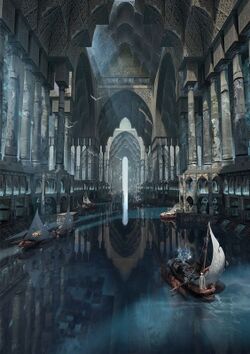
Alavarro II shared similar motivations to his mother and was fascinated by military matters; however unlike his mother who had inherited a nation with room for reform and a need to develop, Alavarro had inherited a disciplined and effective army in the form of the Royal Marines established by his mother. Instead Alavarro set his eyes upon the navy; though the Royal Marines were trained and intended to serve at sea as well as on land, the organisation behind the ships that actually carried them was far less effective or well conceived. Corto I had only needed to use his ships as a means of transporting troops along the coastline, most of the fighting during the unification had taken place inland and as a result he had seen no need to further organise a naval force during the unification. Prior to the reforms of Alavarro II the navy was practically non-existent with civilian and merchant vessels being conscripted during times of conflict; a system which though cheap, was not particularly effective and left Cartulia vulnerable to piracy and coastal raiders. Alavarro commissioned the construction of the nation's first dedicated military shipyard in Puerto Alcázarra in 122 ICC and construction was completed in 129 ICC; the shipyard was massive, carved into the rock of the sea cliffs north of the city proper and could be used to construct four ships at a time. Under Alavarro's direction the Royal Service established departments responsible for the management of the marines and the navy; these would include institutions with the goal of equipping, supplying, and maintaining soldiers and ships.
The reign of Alavarro II also saw the rapid growth of trade as well as the beginning of international trade overseas for Cartulia itself. The Greater Clans could afford to invest in trading expeditions that brought back new materials and ideas; Alavarro himself however was only passably interested in economic concerns and was content to allow the situation to manage itself. As long as the Greater Clans continued to pay taxes he did not seem to mind where they got their coin from. The governmental indifference to the growth of trade left it in many places totally unregulated; on the one hand this had the benefit of causing banking to take hold as well as modern mercantile practices, but on the other without regulation wealth disparity was extreme and a system of indentured servitude evolved. While income inequality was nothing new at this time poverty became rampant and the nation faced a series of food shortages due to wider mismanagement. At the time of Alavarro II's death in 158 ICC the nation was facing growing food shortages and a rising infant mortality rate.
Reign of Miguel-Carlos I
Alavarro II was succeeded by his son Miguel-Carlos I in 158 ICC. Miguel-Carlos I was the first of the Cartulian Déspotas to have been born heir to the throne and was the first who by no means had to worry about preserving his rule against internal threats. Sometimes known as Miguel-Carlos Suficiente (lit.: Miguel-Carlos the Complacent), he did little to help restore his nation's former economic strength. The reign of Miguel-Carlos I was marked by a period of general malaise among the upper classes and the suffering of the poor as a result of the rampant growth of exploitative capitalism; the result of this was an overall contraction of the economy and weakening of the nation's prestige. However culturally the nation flourished and entered a golden age of art and literature as Miguel-Carlos and other members of the elite began to commission works of art and writing. Notably various methods of acid etching were first discovered and employed in Cartulia during the later years of his reign, allowing the more effective practice of creating books and texts with pages made from copper and bronze.
During the reign of Miguel-Carlos I Iblesian Dawi artistry developed and examples of statuary and earthen goods from his reign are now highly sought after status symbols. Prior to the reign of Miguel-Carlos a great deal of the artwork created in Cartulia was rendered in stone, with only the very wealthy commissioning painted works, the primary focus was ensuring that the art would last, a view which declined over time as less permanent modes of artwork which provided more versatility became readily available. Paintings started to be worked onto canvas and boards in place of walls or stone tablets and more and more portable artwork was created, rather than works integral to a building. A transition was made away from the ancient Dawi tradition of carving their artworks on a grand scale.
Reign of Miguel-Carlos II
Miguel-Carlos II began his reign in 204 ICC upon his father's death from tuberculosis. Miguel-Carlos II was a much more austere character than his father who valued simple pleasures and much of the works of art his father had accumulated were thus sold off in order to fund national infrastructural projects. A highly religious man Miguel-Carlos II proceeded with a series of policies aimed at improving the lot of the lower classes in society, however he took a very high minded approach to the task. Believing that the development of new roads both above and below ground would be critical he set about on a massive program of road building, using his military as a workforce. He also introduced foreign ideas such as water wheels and windmills which markedly increased agricultural output. Miguel-Carlos II further wrote a number of texts regarding good governance, the most successful of which has been taught to all of his descendants to this day. Despite the developments spurred on by Miguel-Carlos II standard of living improvements for the poorest in Cartulia did not occur leading to widespread resentment amongst the populace; several attempts to end serfdom and spur on further social reform were made however Miguel-Carlos II firmly opposed such radical policies.
Reign of Rocinante I
Miguel-Carlos II was succeeded by his daughter Rocinante I in 266 ICC upon her father's natural death. She inherited a strong and powerful central government and a well developed national infrastructure; however she also inherited the problems that her father's reign had created. The system of serfdom was starting to strangle the economy and hinder the nation's development, in many cases children were effectively being sold into slavery, and the country struggled to develop a large and diverse middle class as a result. True craftsmen and artisans were becoming increasingly rare and the nation started to suffer from a significant brain drain as the educated and skilled sought better opportunities elsewhere. As a means of countering these issues Rocinante I established a number of institutions including Royal Academies, and Royal Societies to support and promote the evolving Iblesian Enlightenment ideas, however like her father she refused vehemently to concede to demands to end serfdom outright, instead introducing reforms allowing serfs to buy their way out of bondage.
During Rocinante I's reign the twin ideologies of Cartulian Nationalism and the Levellers developed and grew in popularity, culminating in the Loyal Revolution of 311 ICC during which a coalition of serfs led and supported by merchants and tradesmen started to occupy local counting houses and Royal Service offices, refusing to pay taxes or allow the normal functions of government. The Loyal Revolution would last for six years while the Marinos Real struggled to put it down. Several units within the armed forces and within local militia and law enforcement that were sent to deal with the revolutionaries actually defected once they discovered the nature of the movement's demands. Ultimately the Loyal Revolution ended in 317 ICC with the Counting House Siege in Puerto Alcázarra, during which the movement was broken and forced to capitulate after Rocinante I ordered her Royal Guard to storm the building. For the remaining two years of her reign Rocinante I attempted, with limited success, to round up the ringleaders behind the revolution, until her death in 319 ICC. She was succeeded by her son Juan-Carlos I who a year later in 320 ICC bowed to widespread pressure and abolished serfdom.
High Despotismo Period (321 ICC - 644 ICC)
The High Despotismo Period began in 321 ICC following the 320 ICC abolishing of serfdom. It is the abolition of serfdom, and not the succession of Juan-Carlos I which defines the beginning of this period in Cartulia's history. The period was one of significant social, economic, and political change, which would see the traditional economic system give way to one of Guilds and Companies; the growth in personal liberties and the beginnings of new class system all took place during the High Despotismo Period. These changes however came during a golden age for the unquestioned power of the Déspota; the growing Iblesian Enlightenment movement encouraged the evolution of an ideology of enlightened despotism among successive Enlightened Déspotas and their close advisors. The precise date of the end of the High Despotismo Period is debated, however the most widely accepted year is 644 ICC when legal concepts such as habeas corpus, jury trials, and the presumption of innocence were formally codified.
Late Despotismo Period (644 ICC - 810 ICC)
The Late Depotismo Period is largely defined as the transitional period between the conclusion of the High Despotismo Period and the modern day. The central feature of the Late Despotismo Period is the growth of free enterprise and capitalist economics, replacing the older caste systems and breaking down the barriers between the more traditional societal classes. The Late Despotismo Period ended in 810 ICC following the codification in that year of radical reforms to how taxation and law worked. The end of the Late Despotismo Period brought about a de facto end to the absolute power of the monarch with the introduction of the Comisión de Comercio (lit.: Commission For Trade) and the Comisión de Ingresos y Aduanas (lit.: Commission for Revenues and Customs) to manage the passage of laws and regulations relating to the economy.
Modern Era (811 ICC - Present)
The Modern Era began in 811 ICC at the turn of the year following the establishment of the dos comisiones, during the reign of Rocinante II, which marked the beginning of a series of significant constitutional reforms which have defined Rocinante II's reign and the period thus far as a whole.
Geography
Politics
Military
Culture
Economy
Good Produced
| Item | Item Type | Image | Examples | Details | Exported? |
|---|---|---|---|---|---|
| Iron | Mineral | 
|
Refined iron ingots, tools, armour, weapons, steel |
Iron is one of the main mineral resources found in Cartulia. Mined extensively throughout the nation it forms the basis of much of the Cartulian metalworking industry, whether it is formed into steel or kept (relatively) pure for other purposes. The iron mining and working industries in Cartulia are vast and extensive with the Ironworker's Guild being one of the largest, wealthiest, and most prestigious of the nation's guilds. Iron has been extracted, refined, and worked in Cartulia since time immemorial, though in the Iblesian Dawi folklore and mythology it is seen as a fickle and unreliable metal unless tempered with another material for its softness and tendency to rust. | Yes |
| Bronze | Alloy | 
|
Bronze ingots, tools, armour, weapons |
Objects made from bronze have been manufactured in Cartulia in one form or another for millennia. The earliest extant examples of bronze tools dates back at least four thousand years and the legendary Dawi hero Cartu Zothrazviraminan was said to have used a cast bronze warhammer in battle. Although the use of bronze in weapons and armour has largely given way to the use of iron and later steel the manufacture of bronze and bronzeware remains a strong part of the nation's industry with domestic products, tools, decorative items, and jewellery rendered in the material remaining popular. The Menta Real even issues a bronze coin. | Yes |
| Steel | Alloy | 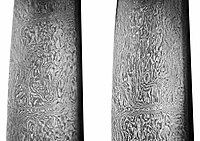
|
Steel ingots, tools, armour, weapons | The development of steel from iron took root in Cartulia fair back in the nation's history and its properties made it highly sought after and much preferred to iron or bronze. Experimentation with the production of steel in terms of the properties, quality, and quantity that could be manufactured became a matter of great interest and Cartulian steelsmiths rapidly developed their own favoured techniques. Modern Cartulia produces two principle kinds of steel in sizeable quantities; Alcázarra and Cartulian steel, both of which are exported as ingots or actual materials. | Yes |
| Copper | Mineral | 
|
Copper ingots, refined copper currency, tools, armour, weapons, jewellery, domestic goods, bronze | Cartulian Copper is mainly used in the production of Bronze, however there is a chartered guild known as the Guild of Copper and Redsmiths, which focuses solely upon the refining and use of pure copper. While copper weapons and armour are still manufactured these are usually ornamental pieces, or made by specific request rather than in bulk; generally Cartulian copperware takes the form of cooking pots and utensils with little to none being exported abroad. The lowest denomination of the Cartulian currency, the Faisa, is rendered in copper. There are two major copper mines in Cartulia. | No |
| Gold | Mineral | 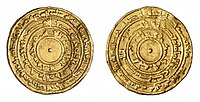
|
Gold ingots, refined gold currency, jewellery, bullion, alloys | Gold is one of the most valued metals to the Dawi of Cartulia. Its most common use is in the creation of currency and bullion, with ten silver Talents being worth on gold Baza. The Royal Mint in Castillo Alcázarra is renowned for the quality and reliability of the coins it produces and the goldsmiths and coinstrikers who work for the mint are held to extremely high standards to ensure that the currency and bullion they produce are of the highest standards of purity. Besides its use as currency the trade in gold ornaments and jewellery is a popular one; gold is used as a means of showing wealth and status and so the Guilds of Goldsmiths and Jewellers earn a great deal of prestige and many wealthy patrons. There is only one active gold mine in Cartulia which is located on the island of Iblesia. | Yes |
| Silver | Mineral | 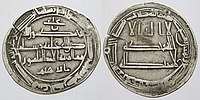
|
Silver ingots, refined silver currency, jewellery, bullion, alloys | Silver is the primary measure of an item's value in Cartulia with the nation's currency the Talent being rendered in silver. The value of everything, even more valuable materials such as gold, is given in silver and it is not uncommon for a Cartulian trader or artisan ask what a thing is worth by weight in silver. There is no guild of silversmiths, this is because the processing of raw silver into usable ingots is entrusted solely to the Royal Mint. Jewellery made using silver is still quite popular and so the Guild of Jewellers is allowed to purchase bars of refined silver for use in the production of ornaments and trinkets. The ownership of silver ore and unminted silver is tightly controlled within Cartulia. | No |
| Coal | Mineral | 
|
Fuel | The rock which fuels the industrial economy of Cartulia is coal. Vast quantities of coal are needed and used on a daily basis in order to heat the forges of craftsmen across the nation; however despite the quantities extracted from the earth every day the country is incapable of producing enough coal to meet its needs and so the fuel is expensive and banned from export. Coal mining is a dangerous process and is seen by most of Cartulian society as a demeaning profession, as such the nation's coal mines are owned by the state and run using convict labour. The sentence for most crimes is a stint in the coalmines. | No |
| Wheat | Agricultural | 
|
Grain, flour, bread, baked goods, alcohol | Wheat is the primary crop grown in Cartulia and is cultivated on a grand scale. Major advances in farming techniques and technologies over the last two hundred years have increased crop yields, yet with the majority of the population living and working underground there is still not enough wheat for export. Wheat forms the basis of the agrarian side of the nation's economy and food stores and stockpiles for winter and for emergencies mainly consist of wheat and wheat flour. Much of the cultivated land in Cartulia is owned by one or other of the many merchant companies, there is no guild of wheat farmers though specific trades related to wheat produce do have their own guilds. | No |
| Barley | Agricultural | 
|
Grain, flour, alcohol | Barley is primarily grown for use in fermentation and distillation. Unlike the farming of grain the cultivation of barley is controlled by two guild, though somewhat indirectly, the Guild of Brewers and the Guild of Distillers. Since it is primarily seen as an ingredient and not a source of food in itself the exportation of barley and barley products is not uncommon. | Yes |
| Oats | Agricultural | 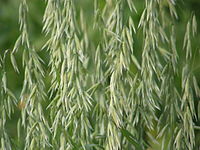
|
Grain, flour, alcohol | Oats form the basis of the working class's diet, and is a staple of the entire nation's diet. Used primarily to make porridges, stews, and oatcakes. The growing of oats is a requirement for any company that wishes to own farmland, and oats are the primary crop of subsistence farmers. No guild of oat farmers exists because the farming of oats is considered to be a subsistence right; unlike with the cultivation of wheat however most of the oats grown in Cartulia are grown on land owned directly by the Bazh and not a company. | No |
| Temperate Vegetables | Agricultural | 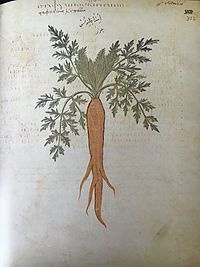
|
Parsnip, Carrot, Beetroot, Turnip, Onion, Leek, Rhubarb | Vegetable cultivation in Cartulia takes place both above and below ground and, unusually for agricultural producers vegetable cultivation is governed by a guild. The Guild of Gardeners and Greengrocers was chartered by royal decree in 321 ICC shortly after the abolition of serfdom as a means of ensuring the continued cultivation of vegetables and preventing vegetable prices from rising as free farmers started to grow 'easier' crops that were more profitable. The Guild of Gardeners and Greengrocers is not however allowed to sell its produce overseas. | No |
| Temperate Fruits | Agricultural | 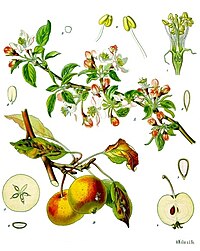
|
Apples, Pears, Peaches, Strawberries, Raspberries, Blackberries, Sloes, Olives | The cultivation of fruit is managed by the Guild of Gardeners and Greengrocers, although certain fruits such as apples, pears, and grapes can also be cultivated by the Guilds of Cidermakers and Vintners. As with vegetable cultivation there was a concern following the abolition of serfdom that the cultivation of fruit would decline leading to rising prices of both fruit and fruit products such as cider and wine; under the Royal Charter of the Guild of Gardeners and Greengrocers however the prices stabilised over time and production improved to the point where, unlike vegetables, fruit could be exported. | Yes |
| Medicinal Herbs | Agricultural | 
|
Garlic, Fennel, Nettle, Borage, Aloe, Mint, Elder, Marigold, Shea | The cultivation of medicinal herbs is managed by the Guilds of Herbalists and Apothecaries, though forage laws allow subsistence farmers and hunters to collect wild herbs. Extensive work and cultivation over centuries have enabled the Guild of Herbalists to grow large quantities of herbs for medicinal purposes, and they have even succeeded in vastly increasing the number of harvestable shea and acacia trees in the nation. The majority of the medicinal herbs and goods that are exported are prepared by the Guild of Apothecaries. | Yes |
| Medicinal Alchemy | Crafted | 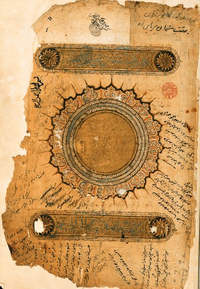
|
Tonics, Tinctures, Salves, Poultices, Potions, Ungents | Medicinal Alchemy is a major business in Cartulia; under the reforms of Rocinante I in the 3rd century ICC the Royal Society for Alchemical Research and the Royal Academy of Alchemy were both established providing alchemists with government funding and a formal system of education. The Society and Academy predate the creation of the guild system, and are considered to be prestigious institutions. The products of medicinal alchemy are widely exported. | Yes |
| Medicinal Apothecaric Goods | Crafted | 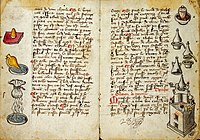
|
Tonics, Tinctures, Salves, Poultices, Ungents | The products of apothecaries are treated differently to medicinal alchemy. Where medicinal alchemy involves the arcane and in some cases magical knowledge Medicinal Apothecaric Goods are produced along more scientific lines and lack the involvement of magic or ritual. | Yes |
| Research Books | Intellectual | 
|
Medicinal, Herbal, Metallurgical | The various Royal Societies and Academies promote the publishing of various academic texts, many of which are exported, as a means of drawing in extra income for their members and graduates. Cartulia specialises in the fields of medicinal alchemy, herbalism, and metallurgy. | Yes |
| Whale Products | Aquaculture | 
|
Bone, fat, oil, ambergris, meat | Whaling is a significant industry in Cartulia. Whales provide meat for food, blubber and fat for various uses including heating and light, bone for crafting items, ambergris for alchemical use, and hides which are used as a building material and fabric substitute. Every part of a whale is used with nothing going to waste; developments in technology are increasing the demand for whale oil and fat for the provision of heat and light, and tools and weapons made from whale bone are lightweight and resistant to corrosion while at sea. Even as an ornamental medium whale bone is prized, used for statuary, scrimshaw, and in jewellery, clothing, and accessories. Ambergris meanwhile is used in alchemy, medicine, and perfumery. | Yes |
Goods Imported
| Item | Item Type | Image | Examples | Details | Source(s) |
|---|---|---|---|---|---|
| Timber | Natural | File:Freshlycutlogs.JPG | Oak, Pine, Rowan, Ebony | As a maritime nation with large and well developed shipyards Cartulia uses a great deal of timber in shipbuilding. Cities and homes are largely made from stone, but the military and merchant companies alike rely on timber, and thus a great deal must be imported from overseas. While the growth and cultivation of rowan, shea, and acacia are widespread these woods are not best suited for shipbuilding and with only limited woodlands to take advantage of, Cartulia alone cannot produce sufficient timber. The balance must also be made between charcoal manufactures and the use of timber for construction. | Ras Vertaz |
| Copper Ore | Mineral | 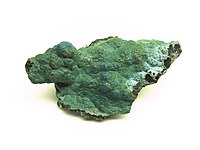
|
Only ores, refinery takes place in Cartulia. | Although Cartulia produces a great deal of copper ore to begin with the amount of bronze being produced, and the appetite for raw materials, mean that more is always needed. | |
| Tin | Mineral | 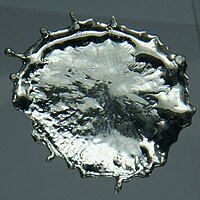
|
Refined ingots and ores. | Cartulia only has minimal tin deposits and the demand for bronze goods outstrips the possibilities given the domestic tin supply therefore it is necessary to import quantities of tin, both ore and refined, for bronze production. | |
| Textiles | Crafted | 
|
Wool, silk, cotton | ||
| Gems | Mineral | 
|
Uncut gems | ||
| Silver | Mineral | 
|
Silver ingots, silver ore | ||
| Coal | Mineral | 
|
Fuel | ||
| Wine | Produce | 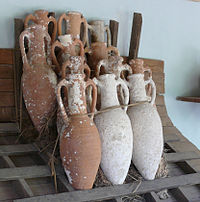
|
Red, White, whatever | ||
| Whale Products | Aquaculture | 
|
Bone, fat, oil, ambergris, meat |



